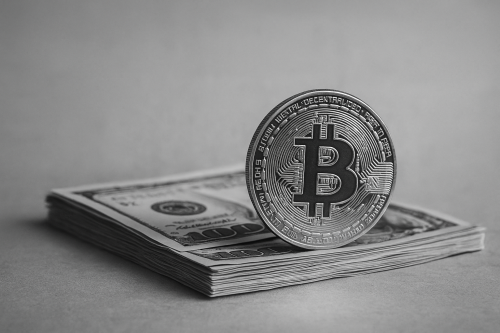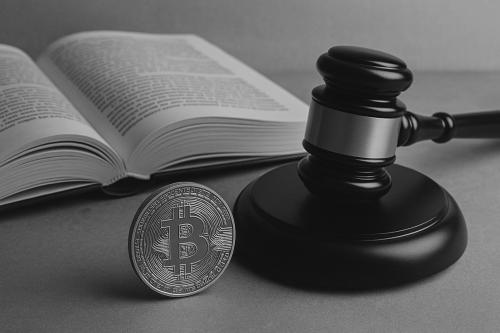Digital developments, tools and technologies – the new frontiers for combating corruption and expanding Collective Action?

Are we on the brink of the next industrial revolution - or is it already here? Are we about to witness a leap forward into what sounds like a mixture of science fiction and hype but which may also provide new opportunities for economic and social development and see a significant reduction in corruption?
These are a the questions that I will be exploring on a panel this Thursday, 22 February 2018, on “Digital Compliance in Emerging Market Economies: How can we Increase Compliance in Global Supply Chains,” as part of this year’s Alliance for Integrity’s global conference focusing on “Implementing Integrity into Practice – Integrity in the Digital Era.”
More and more, new and evolving technologies seek to exploit open data to improve policy decision-making and create digital tools, software and other related developments that may help contribute to the reduction of corruption, particularly where they are used in combination so that shortcomings between digital solutions and platforms are removed or reduced.
As most of these developments are still in the early stages of implementation it is, generally speaking, too soon for in-depth analyses of their effectiveness when it comes to tackling corruption. The focus is therefore on descriptive reporting on the technologies and anecdotal evidence on how they perform. If the anticipated leaps are actually realised, then hopefully a great deal of analysis will emerge providing further commentary and concrete recommendations on how to harness these developments for effective corruption prevention.
Last year, the Basel Institute on Governance published a Working Paper on “New Perspectives in E-Government and the Prevention of Corruption,” which presented the results of a literature review of evidence supporting the causal link between e-government and corruption reduction, as well as the results of a unique anonymous web survey conducted by the Basel Institute to ascertain the extent to which companies are aware of, and use, e-government tools and digital solutions and the motivations for doing so.
Beyond e-government tools, this blog provides a list and description of a number of new digital developments and technologies that may be worth considering when determining corruption risks and how they can be mitigated effectively: Companies might wish to consider exploring and investing in some of these tools and learning how they can be used to support business and anti-corruption strategies together with other stakeholders so that Collective Action can support the further acceptance and implementation of solutions that could be game changers when it comes to reducing bribery and corruption.
Open data
Open government data refers to a government policy approach that renders government data public and available to all, including for value creation (including for-profit). It can help increase transparency and accountability as well as participation through open government data. By providing online access to the information that the government generates and collects on a host of subject areas, people have greater insight into how governments operate and how public funds are spent. There are various examples to draw upon, such as the Slovakian government’s open procurement data project. Data about public spending is also essential to ensure effective review of the implementation of the Sustainable Development Goals.
Drones and sky warehouses
In October 2016 reports of a joint project involving a US logistics company, the Global Alliance for Vaccines and Immunisation, and a Californian drone maker surfaced in the media. The reports concerned the delivery of blood supplies via drones to patients in rural Rwanda. This pilot project could transform the way that remote areas without access to urgent medical supplies could receive drugs, vaccines, and other essentials that are time-sensitive. Sky warehouses were also featured in the news earlier in 2017, and it is reported that this could mean zeppelin-like aircrafts floating over congested urban areas at an altitude of about 13 km. Smaller aircrafts would restock the flying warehouses and supply them with fuel, while drones would take over the delivery of ordered goods.
Drones in combination with sky warehouses raise the potential for these technologies to cut out third parties and others who add costs and uncertainty into the supply chain. The potential to reduce the need for infrastructure such as roads, tunnels, and bridges may also be affected in the long term from such developments as drones and sky warehouses.
Autonomous or driverless vehicles
Whilst not yet permitted on public roads, the potential for such technologies developing into transport for goods across multiple jurisdictions could change the dynamic in areas where vehicles are frequently stopped for petty bribes, for example.
Geographic Information Systems
A Geographic Information System (GIS) is a computer system for capturing, storing, checking, and displaying data related to positions on Earth’s surface. GIS can show many types of data on one map. This enables people to more easily see, analyse, and understand patterns and relationships. With GIS technology, people can compare the locations of different things in order to discover how they relate to each other.
GIS can use any information that includes location. The location can be expressed in many different ways, such as latitude and longitude, address, or postal code. Many different types of information can be compared and contrasted using GIS. The system can include data about people, such as population, income, or education level. It can include information about the land, such as the location of streams, different kinds of vegetation, and different kinds of soil. It can include information about the sites of factories, farms, and schools, or storm drains, roads, and electric power lines. For example, a user might click on a school to find how many students are enrolled, how many students there are per teacher, or what sports facilities the school has.
It has the potential to create more accurate data for public spending and verification of that spending. These attributes can contribute to greater transparency and accountability and can potentially reduce mismanagement of resources and curb corruption.
Blockchain
This is a database that enables the transfer of value within computer networks, and which ensures trustworthy transactions, such as casting votes or sending money, without the necessity of a third party, such as a public electoral authority. It acts as an open, shared, and trusted public ledger that is transparent and cannot be tampered with.
It has been mentioned in connection with land title registration in Sweden, Cook County (Chicago), Ghana, and Honduras, though there is much work still to be done, and progress around these projects has been delayed in some instances by disputes within the community regarding the future of Bitcoin.
As responder to the Basel Institute survey commented:
"Obviously anything related to documented value, things a Notary would be trusted with in the Western world, would benefit from storage in a public distributed ledger (sometimes called blockchain) to simply eliminate corruption. In other words, where there is need for a trusted 3rd party (that may not be trustworthy) and where the trusted information can be digitalised, then there is an obvious case to automate trust with blockchain technology. Examples include land ownership, identification of people and/or devices, personal track records (education, health, crime-records...)."
Property transactions could be handled on a blockchain similar to the way payments between parties are handled using digital currencies like Bitcoin. Instead of assuming that each ‘coin’ is the same, it would be possible to associate a unique house or piece of land with a particular coin, or fraction of a coin, and exchange it just like in any other transaction using digital currency. The entire transaction history of the property could then be followed through the blockchain. This concept is known as ‘coloured coins’ because the coins are ‘coloured’ to represent a specific asset, such as a house.
Land registry data on blockchains can be made private or public. In real estate transactions, the details are placed on a private blockchain network run by known computers, and then, in order for citizens to verify the authenticity of certificates, that data can be turned into a cryptographic “hash” that’s made public on the Bitcoin blockchain, which is run by thousands of computers worldwide. The hash is a type of digital fingerprint that enables anyone to verify that the data matches what is on the blockchain without seeing the data itself. Blockchain technology brings security to real estate transactions because there is no central point of failure. The ledger is distributed among many computers, so a would-be hacker would need to simultaneously attack at least 51% of the network in order to fraudulently alter records.
Another example of the potential that Blockchain offers can be seen in Colombia’s Liquid Democracy and Blockchain Voting for Peace:
Colombian expats who were unable to vote through the official process on the government’s proposed peace plan in 2016 were given an opportunity to do so through blockchain technology. The Plebiscito Digital platform was a new way to validate and authenticate electoral votes. The new platform was also used to experiment with a different concept of democracy: liquid democracy. Instead of confining the voting to yes/no on the peace treaty, the voter could vote on the sub-themes of the proposed treaty and indicate the relative importance of each one. This enabled the deal-breaker to be identified: the overwhelming "no" vote to the question "Do you agree with political participation of the FARC and opening up democracy?"
Smart contracts
Technological developments that would complement blockchain-based land registration could involve putting notary services and smart contracts (programmable contracts that self-execute when certain conditions are met) for services such as escrow onto blockchains. While the potential for blockchain to improve notary services is being discussed, it is also currently the position that processes for verifying the accuracy of information that gets placed on the ledger have yet to be established.
Internet of Things
IoT is “the network of physical objects or ‘things’ embedded with electronics, software, sensors and network connectivity, which enables these objects to collect and exchange data.” IoT allows objects to be sensed and controlled remotely across existing network infrastructure, creating opportunities for more direct integration between the physical world and computer-based systems, leading to improved efficiency, accuracy, and economic benefit.
Since its introduction, IoT has been used in many aspects of our daily lives, from home security, to remote health follow-up, remote computer access, and so on; however, most of its benefits are still to be revealed. It could be helpful in the prevention of corruption through medical diagnosis techniques, reducing the need to attend a hospital or consult a doctor who may demand a bribe for a consultation or treatment; alternatively, IoT could be helpful in identifying the need for spares/repairs in a machine without the need for intervention by a third party or a sales agent.




